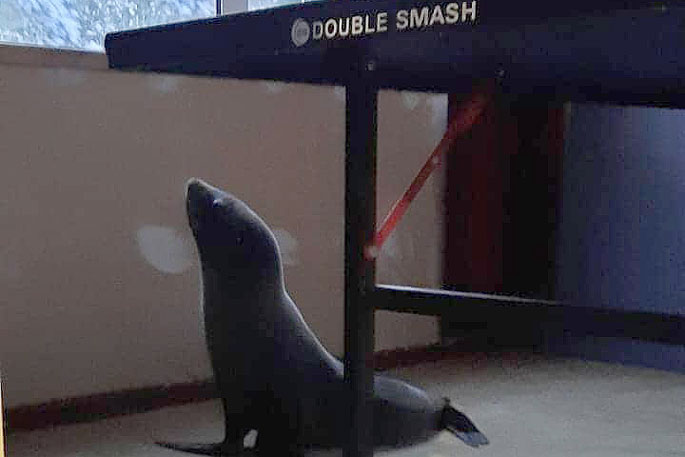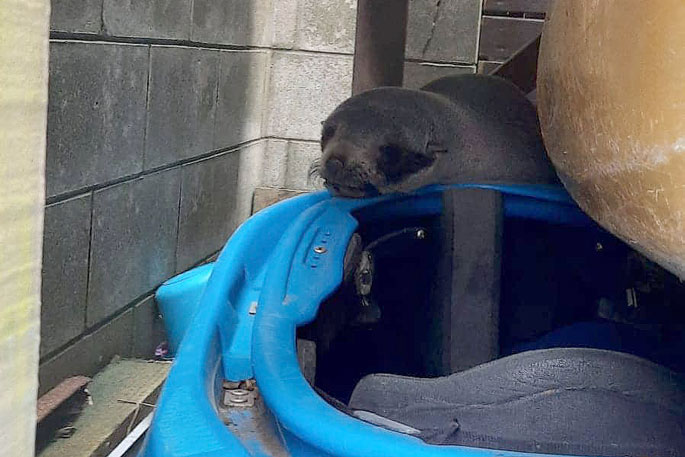New Zealand fur seals should be given 'plenty of space”.
This is the message from a Tauranga resident who had a seal chase his cat through a cat flap and into their house in Omanu this week.
University of Waikato marine biologist Phil Ross has shared a photos of the seal in his house as a warning to other people.
He says this time of the year is where juvenile seals come ashore for a rest and should be given plenty of space.
'It happened yesterday morning, ironically when I was away, so my wife had to deal with it.
'This is probably the only home emergency where a marine biologist would actually be useful.”
Phil says his wife went out to training in morning and when she got home at 7am the seal was in the house.
'The cat was fairly traumatised, so we think cat and seal had a bit of a confrontation in the garden and then cat retreated into house and the seal followed her.
'The seal was up on couch and trying to climb onto the desk. Jenn shut the gate so seal wouldn't end up on road, and called DOC.
'A ranger came and collected seal, to release it into harbour.”
Phil says this time of year coincides with seals beginning to be weaned, so you often get young ones coming ashore during storms to find somewhere to rest.
'The message to public would probably be; if they see seals on the beach or in unusual coastal places they are probably just having a rest, rather than being sick or injured. Best to give them space and keep dogs away from them.”
He says what was particularly crazy, was that seal came through two cat flaps to get into garage and then the house.
'My sons, aged 10 and 12, were pretty excited to have something to tell their friends at school, oblivious to the fact that this is a really unusual occurrence.”

The Department of Conservation website states that from July to September each year there's an influx in adolescent seals appearing on our shores and further inland. This is because seal pups begin to wean as their mothers prepare for new pups.
DOC recommends that on finding a New Zealand fur seal it's usually best to leave it alone, however, there are exceptions.
DOC takes a ‘hands off' approach to seals. Seals are capable and resilient and given time and space, they usually find their way home.
Seals are wild animals and will defend themselves if they feel threatened. Adult seals can move surprisingly quickly on land. While they can look harmless, seals can inflict serious injuries to dogs or people and can carry infectious diseases.
It is an offence under the Marine Mammals Protection Act 1978 to disturb, harass, harm, injure or kill a seal. A dog owner whose dog attacks a seal could face prosecution.
DOC provide safety guidelines when watching seals. You should stay at least 20 m away, don't disturb seals by making loud noises or throwing things, keep dogs and children away, don't feed the seals, and never attempt to touch a seal.
More information on seals and what to do if you come across one can be found on the Department of Conservation website http://www.doc.govt.nz/nature/native-animals/marine-mammals/seals/nz-fur-seal/what-to-do/






0 comments
Leave a Comment
You must be logged in to make a comment.